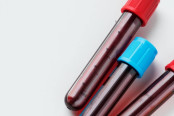Types and Shapes of Blood Spatter: Forensic Analysis and Interpretation
Discover the types and shapes of blood spatter, their forensic significance, and analysis techniques. A comprehensive guide to crime scene interpretation.

Blood spatter analysis is a vital part of forensic science, offering key insights into violent crimes. By studying the shapes, patterns, and distribution of bloodstains at crime scenes, forensic experts can reconstruct the events leading to the bloodshed. These blood spatter patterns help determine the type of injury, the weapon used, the position of the victim and suspect, and the forces involved in the crime.
There are several types of blood spatter patterns, including passive drips, high-velocity splatters, and projected patterns. Each pattern provides unique information, such as the angle of impact and the surface texture, which can help identify whether the injury was accidental or deliberate. Understanding these patterns is essential for investigators to solve crimes and piece together the sequence of events.
This article explores the different types of blood spatter, their forensic significance, and the crucial role they play in criminal investigations.
What is Blood Spatter Analysis?
Blood spatter analysis is a forensic science discipline that examines bloodstain patterns at crime scenes to interpret how the blood was shed. By analyzing the size, shape, and distribution of bloodstains, experts uncover critical details about the events, forces, and timing of a crime, providing insights into its nature and sequence.
Blood spatter analysis is more than just identifying bloodstains; it is about unraveling the story they tell. Each droplet, smear, or pattern holds critical information about the trajectory, speed, and force behind its movement. For example, specific types of blood spatter patterns—such as passive drops, cast-off patterns, and impact stains—can indicate whether blood fell naturally due to gravity, was flung by an external force, or resulted from a high-velocity impact like a gunshot.
The origins of blood spatter analysis date back to the mid-20th century, but the field has undergone significant transformation with advancements in forensic technology. Today, experts utilize traditional observation methods alongside cutting-edge tools, including 3D modeling and high-speed photography, to ensure precise and reliable interpretations of bloodstain patterns found at crime scenes.
The Role of Blood Spatter in Forensic Investigations
Blood spatter analysis is a critical tool in forensic investigations, allowing experts to reconstruct crime scenes by examining the patterns, sizes, and distribution of bloodstains. These patterns help identify key details, such as the positions of victims and perpetrators, the type of weapon used, and the sequence of events. For instance, medium-velocity spatter often indicates blunt force trauma, while high-velocity spatter suggests gunshot wounds.
In legal settings, blood spatter analysis frequently supports courtroom testimony. By interpreting bloodstain patterns, forensic experts can validate or challenge witness accounts, providing a clearer picture of the crime. This scientific approach transforms seemingly random bloodstains into compelling evidence, uncovering the hidden story behind violent incidents.
Types of Blood Spatter Patterns
Blood spatter patterns can be categorized into seven primary types, each offering crucial insights for forensic investigations:
- Passive Blood Spatter:
- Characteristics: Round or oval stains formed by gravity.
- Examples: Drops, pools, and trails.
- Forensic Use: Indicates victim movements and bleeding rate.
- Projected Blood Spatter:
- Medium-Velocity: Larger droplets from blunt force trauma.
- High-Velocity: Mist-like patterns caused by gunshots.
- Forensic Use: Identifies weapon type and attack force.
- Cast-Off Patterns:
- Characteristics: Linear arcs from swinging bloodied objects.
- Forensic Use: Reveals weapon type, number of blows, and attacker movements.
- Transfer Stains:
- Characteristics: Smudges, handprints, or footprints from contact.
- Forensic Use: Links objects or individuals to the crime scene.
- Expirated Blood Spatter:
- Characteristics: Includes air bubbles or mucus, expelled from the mouth or nose.
- Forensic Use: Indicates injuries and whether the victim was alive.
- Arterial Spurting Patterns:
- Characteristics: Pulsating arcs or waves from severed arteries.
- Forensic Use: Identifies severe injuries and victim movement.
- Impact Spatter:
- Characteristics: Droplets dispersed from an object striking blood.
- Forensic Use: Determines the nature of the attack.
Understanding Blood Spatter: Types and Forensic Importance
Analyzing blood spatter patterns is essential for crime scene reconstruction.
1. Passive Blood Spatter
Passive blood spatter occurs solely due to gravity. These patterns typically form when blood drips from a wound or blood-covered object onto a surface without any external force.
- Characteristics: Passive stains are round or oval and vary in size based on the height and angle from which the blood falls.
- Examples: Blood drops, pools, and trails.
- Forensic Importance: They help determine the victim’s movements or positions and can indicate the bleeding rate over time.
2. Projected Blood Spatter
Projected blood spatter results from an external force propelling the blood away from its source. This type of pattern varies based on the force’s velocity and direction.
- Medium-Velocity Impact Spatter: Common in blunt force trauma, these patterns are often seen in assaults. Blood droplets are larger and widely distributed.
- High-Velocity Impact Spatter: Produced by gunshots or explosions, these patterns create fine mist-like droplets due to the high energy involved.
- Forensic Importance: By analyzing these types of blood spatter, investigators can determine the nature and intensity of the attack as well as the type of weapon used.
3. Cast-Off Patterns
Cast-off patterns are created when blood is flung from a bloodied object, such as a knife, bat, or hand, during a forceful motion.
- Characteristics: Linear trails or arcs that reflect the object’s movement.
- Forensic Importance: The shape and direction of cast-off patterns can indicate the number of blows, the attacker’s position, and the type of weapon used.
4. Transfer Blood Stains
Transfer stains occur when a blood-covered object comes into contact with a clean surface, leaving behind a trace.
- Characteristics: These patterns often appear as smudges, handprints, or footprints.
- Forensic Importance: Transfer stains help link individuals or objects to a crime scene and provide evidence of movement or interaction.
5. Expirated Blood Spatter
Expirated blood spatter is formed when blood is expelled from the mouth, nose, or respiratory tract, often due to injuries to the chest, throat, or head.
- Characteristics: Expirated patterns may include air bubbles or mucus, distinguishing them from other types of blood spatter.
- Forensic Importance: These patterns provide clues about the victim’s injuries and can indicate whether the individual was still alive during the incident.
6. Arterial Spurting Patterns
Arterial spurting occurs when blood is ejected under pressure from a severed artery.
- Characteristics: These patterns form large arcs or waves, often with a pulsating rhythm due to the heartbeat.
- Forensic Importance: Arterial spurt patterns help identify severe injuries and can reveal the location and movements of the victim or perpetrator.
7. Impact Spatter
Impact spatter is created when an object strikes a blood source, dispersing droplets in various directions.
- Characteristics: The size and distribution of droplets depend on the force and surface involved.
- Forensic Importance: This category includes high-velocity and low-velocity spatter, which are essential in determining the nature of the attack.
Shapes of Blood Spatter and Their Significance
Shapes of blood spatter vary based on the angle of impact, velocity, and surface texture. They typically range from circular stains at perpendicular impacts to elongated elliptical shapes at angled impacts, often with tails or spines indicating the direction of travel. Smaller satellite stains may form when droplets break apart on impact.
1. Round Bloodstains
- Description: Circular bloodstains form when a blood droplet strikes a surface at a perpendicular angle (90 degrees).
- Formation: These stains occur due to passive dripping, where gravity is the only force acting on the blood.
- Significance: Round stains help investigators pinpoint the source of bleeding, often marking the location where the victim was stationary or upright.
2. Elongated Bloodstains
- Description: These stains have an oval or teardrop shape, indicating movement or directionality.
- Formation: Created when blood impacts a surface at an angle other than 90 degrees. The greater the angle, the more elongated the stain becomes.
- Significance: The tail of the stain points toward the direction of travel, aiding in trajectory analysis. This information is critical in understanding the position and movements of both the victim and perpetrator.
3. Spines and Satellite Stains
- Description: Spines are thin, pointed projections extending from the main droplet, while satellite stains are smaller blood droplets that break away from the parent stain.
- Formation: These features form when a droplet strikes a rough or porous surface, causing blood to disperse upon impact.
- Significance: Spines and satellites help determine the type of surface involved, as well as the velocity and force of the blood’s impact.
4. Drip Patterns
- Description: These patterns consist of overlapping circular stains or a series of stains forming a trail.
- Formation: Drip patterns occur when blood falls onto an existing pool or surface in successive drops.
- Significance: The size and spacing of the drops reveal the height and speed of movement, assisting in reconstructing the victim’s actions.
5. Impact Stains
- Description: These stains often appear as irregularly shaped droplets or mist-like patterns, depending on the velocity of the force.
- Formation: Impact stains result from a blunt object striking a blood source or high-velocity events like gunshots.
- Significance: The size and distribution of these stains categorize them into low, medium, or high-velocity spatter, which is essential in identifying the type of weapon used and the nature of the attack.
6. Void Patterns
- Description: Void patterns are empty spaces or clean areas within a bloodstain pattern, where an object or person blocked the blood’s path.
- Formation: These patterns form when a body or object interrupts the blood spatter trajectory before being removed.
- Significance: Void patterns reveal the size, shape, and location of the obstructing object, providing clues about the positioning of individuals during the crime.
7. Wipe and Swipe Stains
- Description:
- Wipe stains: Occur when an object moves through an existing bloodstain, altering its appearance.
- Swipe stains: Happen when a blood-covered object moves across a clean surface.
- Formation: These stains are caused by deliberate or accidental movement of blood across surfaces.
- Significance: Wipe and swipe stains offer insights into post-incident actions, such as attempts to clean the scene or drag a victim.
Interpreting Shapes for Crime Scene Reconstruction
The shapes of blood spatter are essential in piecing together the sequence of events at a crime scene. By examining stain morphology, forensic analysts can determine the type of force applied, the direction of blood travel, and even the timeline of events. This meticulous study transforms seemingly chaotic blood patterns into a coherent narrative, strengthening the accuracy and reliability of forensic investigations.
Key Factors Influencing Blood Spatter Formation
Factors influencing blood spatter formation include the force applied, angle of impact, velocity, surface texture, and blood volume. Each variable shapes the size, shape, and distribution of bloodstains, providing critical forensic insights into the events at a crime scene.
Below are the primary factors and their significance.
1. Force and Velocity
The type and shape of blood spatter patterns are directly influenced by the force applied to the blood source.
- Low-Velocity Spatter:
- Formed by minimal force, such as passive dripping.
- Produces large, round drops.
- Indicates a stationary victim or slow-moving action.
- Medium-Velocity Spatter:
- Caused by moderate force, such as blunt-force trauma.
- Produces smaller, elongated drops.
- Suggests a struggle or movement during the event.
- High-Velocity Spatter:
- Results from extreme force, such as gunshot wounds.
- Creates fine mist-like patterns.
- Indicates rapid and intense actions at the scene.
Significance: Velocity analysis helps determine the type of weapon or force used, aiding in reconstructing the crime’s dynamics.
2. Angle of Impact
The angle at which a blood droplet strikes a surface directly affects its shape.
- Perpendicular Impact (90°): Produces circular stains.
- Angled Impact: Creates elongated or teardrop-shaped stains, with the pointed end indicating the direction of travel.
Significance: Studying the angle of impact allows forensic experts to establish the relative position of the victim and assailant during the incident.
3. Surface Texture
The texture of the surface where blood lands plays a significant role in the resulting spatter pattern.
- Smooth Surfaces: Produce clean, well-defined stains.
- Rough or Porous Surfaces: Cause irregular edges, spines, and satellite stains.
Significance: Surface texture analysis aids in identifying the environment where the crime occurred and the materials involved.
4. Blood Volume and Viscosity
The quantity and consistency of blood significantly affect the patterns formed.
- High Blood Volume: Creates larger stains and may result in pooling.
- Low Blood Volume: Produces smaller, more dispersed droplets.
- Viscosity Changes: Due to clotting or environmental conditions, viscosity affects the stain’s spread and edges.
Significance: Blood volume and viscosity offer insights into the extent of injury and the timeline of events.
5. Gravity and Air Resistance
The natural forces of gravity and air resistance influence how blood droplets travel and land.
- Gravity: Dictates the downward motion of blood, creating passive patterns like drips and pools.
- Air Resistance: Alters the trajectory of blood in motion, especially in high-velocity events.
Significance: Understanding these forces helps distinguish between active and passive spatter patterns.
6. Movement of Individuals and Objects
The motion of the victim, assailant, or objects in the scene can distort blood spatter patterns.
- Dynamic Movements: Lead to swipe and wipe patterns, indicating post-incident actions.
- Stationary Movements: Produce well-defined spatter, useful for pinpointing specific events.
Significance: Movement analysis reveals the sequence of actions and any attempts to alter the crime scene.
Tools and Techniques for Blood Spatter Analysis
Techniques for blood spatter analysis include angle of impact calculation, point of origin determination, pattern classification, chemical enhancement, and digital analysis. These methods help forensic experts accurately reconstruct crime scenes and interpret blood evidence.
1. High-Resolution Imaging Tools
Advanced imaging technology plays a crucial role in capturing and analyzing bloodstain evidence.
- Digital Cameras:
- Used for photographing the crime scene and blood spatter patterns.
- Equipped with high-resolution capabilities to document intricate details.
- 3D Laser Scanners:
- Create three-dimensional representations of the scene.
- Allow for accurate measurements of stain angles, distances, and trajectories.
Significance: These tools preserve critical evidence and facilitate detailed analysis, even after the crime scene has been cleared.
2. Bloodstain Pattern Analysis Software
Modern software solutions assist in interpreting complex blood spatter evidence.
- AutoCAD and Crime Scene Reconstruction Software:
- Used to map and visualize blood spatter trajectories.
- Help in determining the point of origin and direction of travel.
- Specialized Forensic Applications: Simulate the dynamics of blood spatter based on input parameters like force, angle, and surface texture.
Significance: These tools streamline data interpretation and improve the accuracy of conclusions drawn from evidence.
3. Light and Microscopic Examination
To uncover details invisible to the naked eye, forensic experts rely on specialized lighting and magnification techniques.
- Luminol and BlueStar Testing: Reveal latent bloodstains by emitting a luminescent glow when in contact with blood traces.
- Microscopy: Provides a closer look at droplet morphology, including clotting and edge patterns.
Significance: These techniques uncover hidden evidence and validate findings from visual inspections.
4. Angle and Trajectory Measurement Tools
Determining the angle and trajectory of blood droplets is essential for reconstructing the sequence of events.
- Protractors and Angle Measurement Devices: Help measure the impact angle of individual stains.
- Stringing Method: Strings are used to connect bloodstains back to their point of origin, creating a visual trajectory.
Significance: These tools assist in pinpointing the victim’s and assailant’s positions during the incident.
5. Chemical and Biological Testing Kits
Chemical tests help confirm the presence of blood, while biological tests provide additional details about its source.
- Presumptive Blood Tests: Chemicals like phenolphthalein or hydrogen peroxide confirm blood presence.
- DNA Profiling Kits: Extract genetic material from blood samples to identify the victim or suspect.
Significance: These techniques ensure that bloodstains are correctly identified and linked to individuals involved.
6. Documentation and Data Analysis Tools
Proper documentation and analysis are critical for presenting findings in a court of law.
- Scene Sketching Tools: Physical or digital tools for creating detailed diagrams of blood spatter.
- Statistical Analysis Software: Evaluates patterns and correlates findings with possible scenarios.
Significance: Comprehensive documentation supports the credibility of forensic evidence in legal proceedings.
Practical Applications of Blood Spatter Analysis
Applications of blood spatter analysis include reconstructing crime scenes, identifying the position of individuals, determining weapon type and force used, corroborating witness testimonies, and supporting legal proceedings. This forensic tool bridges evidence and courtroom understanding.
1. Crime Scene Reconstruction
One of the most vital uses of blood spatter analysis is reconstructing the sequence of events at a crime scene.
- Determining the Sequence of Actions: By analyzing different types of blood spatter, forensic experts can establish the order of events, such as attacks, movements, and impacts.
- Identifying Points of Origin: Tools like trajectory analysis help pinpoint the location of the victim or assailant during the incident.
- Understanding Weapon Dynamics: Spatter patterns reveal information about the type of weapon used and the force exerted.
Significance: This application helps piece together fragmented evidence, providing investigators with a clear narrative of the crime.
2. Corroborating Witness Statements
Blood spatter evidence is often used to validate or challenge statements made by witnesses or suspects.
- Matching Spatter Evidence with Testimonies: Forensic experts compare bloodstain patterns with the account provided to assess consistency.
- Disproving False Claims: Inaccuracies in a suspect’s statement can be revealed through discrepancies in blood evidence.
Significance: This ensures that only reliable testimonies are considered, strengthening the integrity of the investigation.
3. Assailant and Victim Identification
Blood spatter analysis provides clues about the individuals involved in a crime.
- Height and Position Estimation: Analysis of spatter angles and droplet distribution helps estimate the height and position of the assailant or victim.
- Movement Tracking: The trajectory of blood spatter patterns indicates how individuals moved during the altercation.
Significance: These insights contribute to identifying potential suspects and reconstructing their interactions with the victim.
4. Evidence Presentation in Court
Blood spatter analysis is a critical tool for presenting scientific evidence in legal proceedings.
- Visual Aids for Juries: 3D reconstructions and diagrams of types of blood spatter help juries understand the crime scene dynamics.
- Establishing Motive and Intent: Bloodstain evidence can demonstrate premeditation, such as repeated attacks or attempts to clean up blood.
Significance: These applications bolster the prosecution’s case, increasing the likelihood of a fair trial.
5. Cold Case Investigations
Blood spatter analysis also plays a role in solving cold cases.
- Reinterpreting Old Evidence: Advances in technology enable forensic experts to revisit and analyze old bloodstain evidence.
- Connecting Past Cases: Patterns in blood spatter may link unsolved crimes to known offenders.
Significance: This application breathes new life into unresolved cases, offering hope for justice.
6. Training and Research
Blood spatter analysis contributes to the training of forensic professionals and the development of the field.
- Forensic Education: Bloodstain patterns are used as case studies in training programs for forensic scientists.
- Advancements in Forensic Science: Research into different types of blood spatter patterns aids in the refinement of investigative methods.
Significance: Continuous learning and innovation ensure that forensic science evolves to meet modern challenges.
Challenges and Limitations in Blood Spatter Analysis
Challenges and limitations in blood spatter analysis include the variability of human behavior, contamination of evidence, misinterpretation of patterns, environmental factors, and limitations in technology. These factors can affect the accuracy and reliability of conclusions drawn from blood spatter evidence.
1. Subjectivity in Interpretation
One of the most significant challenges in blood spatter analysis is its reliance on expert interpretation.
- Individual Expertise Matters: The conclusions drawn can vary depending on the examiner’s experience and training.
- Limited Standardization: While guidelines exist, the lack of universal standards can lead to inconsistent results.
Impact: Subjectivity increases the potential for errors, which can weaken the credibility of the evidence in legal proceedings.
2. Environmental and Scene Contamination
The conditions of a crime scene can significantly influence the quality of blood spatter evidence.
- External Influences: Factors like wind, temperature, and humidity can alter the original patterns of blood spatter.
- Post-Incident Scene Changes: Cleaning attempts or movement of objects and bodies can distort critical evidence.
Impact: Such contamination complicates accurate reconstruction, potentially leading to flawed conclusions.
3. Complexity of Overlapping Patterns
Crime scenes often contain multiple types of bloodstains, which can overlap and obscure each other.
- Difficulty in Isolation: Analyzing individual patterns in a chaotic scene requires advanced skills and tools.
- Interpreting Mixed Spatter: Overlapping patterns from multiple events can confuse the sequence of actions.
Impact: Misinterpretation of mixed patterns may result in incorrect crime scene reconstructions.
4. Limitations of Current Technology
While technological advancements have improved forensic analysis, limitations remain.
- Resolution and Precision Issues: High-tech tools, such as 3D laser scanners, may not always capture minute details accurately.
- Dependency on Available Resources: Smaller forensic teams may lack access to advanced equipment, affecting the depth of analysis.
Impact: Inadequate technology or resource gaps can lead to incomplete or imprecise results.
5. Variability in Blood Properties
The physical properties of blood can vary significantly between individuals and scenarios.
- Clotting and Drying: Blood clotting or drying over time changes its behavior, impacting the accuracy of trajectory analysis.
- Health and Environmental Factors: Variables like blood viscosity, diseases, or environmental exposure can alter spatter characteristics.
Impact: These variances add another layer of complexity to blood spatter pattern analysis.
6. Legal Scrutiny and Admissibility Issues
Courts often challenge the reliability of bloodstain pattern analysis as scientific evidence.
- Questions of Credibility: Defense teams may argue that blood spatter evidence lacks the empirical backing to support its conclusions.
- Risk of Misuse: Improper interpretation by unqualified analysts can lead to wrongful convictions.
Impact: These legal challenges emphasize the need for greater transparency and rigor in the field.
7. Ethical Considerations
Using blood spatter analysis to recreate violent events raises ethical concerns.
- Graphic Reconstruction: Detailed depictions of violent crimes may traumatize victims’ families or bias juries.
- Responsibility of Experts: Analysts must navigate the fine line between presenting factual evidence and influencing emotional responses.
Impact: Ethical dilemmas highlight the importance of professionalism and sensitivity in forensic investigations.
Pursuing a Career in Blood Spatter Analysis: Jobs and Education
A blood spatter analyst is a forensic expert specializing in the examination and interpretation of bloodstains and blood spatter patterns at crime scenes. By analyzing factors like size, shape, distribution, and location of bloodstains, these analysts can reconstruct critical events leading to bloodshed. This includes determining the positions of victims and suspects, the nature of the crime, and the weapons used. Blood spatter analysts apply principles from physics, biology, and mathematics to provide insights into crime dynamics, aiding law enforcement and legal professionals in solving cases and offering valuable evidence in court proceedings.
Blood spatter analysis careers provide rewarding opportunities in forensic science, where professionals use their expertise in bloodstain pattern interpretation to solve complex crimes. Aspiring blood spatter analysts typically need specialized education in forensic science or criminal justice, focusing on blood spatter analysis techniques. Hands-on experience and certifications further boost career prospects, opening doors to positions in law enforcement agencies, crime laboratories, and private forensic consultancies.
Conclusion
Blood spatter analysis remains a cornerstone of forensic science, bridging the gap between raw evidence and investigative conclusions. This specialized discipline provides invaluable insights into the dynamics of violent crimes, helping reconstruct events and uncover hidden truths. From understanding the types of bloodstain patterns to applying advanced tools and techniques, each aspect plays a crucial role in ensuring justice is served.
While challenges like subjectivity, environmental contamination, and technological limitations persist, ongoing advancements in the field are steadily addressing these issues. The integration of standardized methodologies, cutting-edge technologies, and enhanced training is not only refining the accuracy of bloodstain pattern analysis but also strengthening its admissibility in courts of law.
Forensic experts, investigators, and researchers must continue to collaborate, innovate, and uphold ethical standards to maximize the potential of blood spatter analysis. By overcoming existing limitations and embracing evolving methodologies, this field will remain a vital tool in unraveling the complexities of crime scenes, ensuring the pursuit of truth and justice.
As we look to the future, the advancements in forensic science will undoubtedly elevate blood spatter analysis to even greater levels of precision and reliability, reinforcing its pivotal role in solving crimes and protecting society.
FAQs
What are the main types of blood spatter?
How do forensic analysts interpret blood spatter patterns?
What is the role of technology in blood spatter analysis?
Last reviewed on .
Article history
- Latest version
Cite this page:
- Posted by Dayyal Dungrela
From Around The Web
-

Blood Sample Preservation Method for PT/APTT Testing
Pathology / Clinical Pathology -

Discovering the History of Clinical Pathology and Its Significance
Pathology / Clinical Pathology -

Laboratory Protocols: Procedures, and Best Practices for Accurate Results
Pathology / Clinical Pathology -

The History of Speech Language Pathology
Pathology / Clinical Pathology -

Tinnitus Relief: How to Stop Ringing in Ears Naturally, Causes, Symptoms, and Treatments
Hearing / Deafness -

What Is Net Reproduction Rate? Understanding the Demographic Concept
Fertility